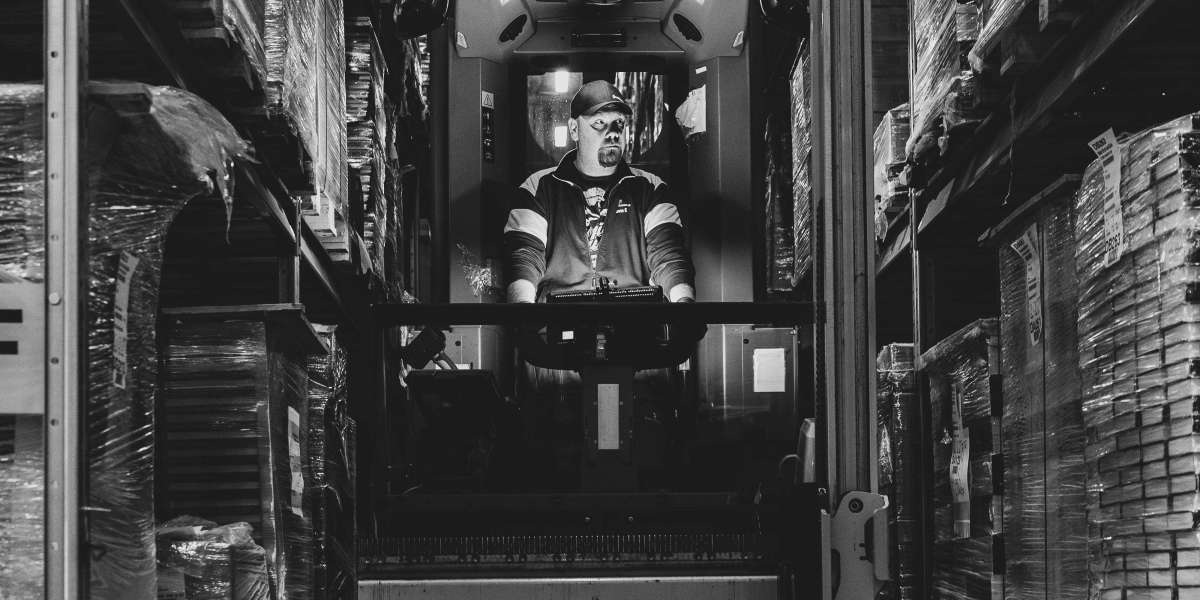The warehouse floor is experiencing a technological revolution that would seem like science fiction just a decade ago. As we navigate through 2025, autonomous forklifts powered by artificial intelligence are transforming how materials move through distribution centers, manufacturing facilities, and logistics hubs worldwide. This isn't just another incremental improvement in material handling equipment—it's a fundamental shift that's reshaping the entire industry landscape.
The Perfect Storm: Why Autonomous Forklifts Are Taking Off Now
The convergence of several market forces has created the ideal environment for autonomous forklift adoption. The global forklift market size is estimated at USD 72.59 billion in 2024 and is projected to grow at a CAGR of 13.7% from 2025 to 2030, with much of this growth driven by automation technologies. Labor shortages, rising operational costs, and the relentless demand for warehouse efficiency have pushed companies to seek innovative solutions.
The COVID-19 pandemic accelerated these trends, highlighting the vulnerability of operations dependent on human labor while simultaneously increasing e-commerce demand. Companies that had already begun investing in autonomous systems found themselves better positioned to weather the storm, creating a powerful demonstration of the technology's value proposition.
Unpacking the Technology: How Autonomous Forklifts Actually Work
Modern autonomous forklifts are engineering marvels that combine multiple cutting-edge technologies into cohesive, intelligent systems. Several key technologies make autonomous forklifts possible: Artificial Intelligence (AI): Helps the forklift analyze surroundings and make decisions. Computer Vision: Allows forklifts to "see" obstacles, workers, and pallets. Sensors and Safety Systems: Radar, LIDAR, ultrasonic sensors work together to create a comprehensive understanding of the operating environment.
The AI brain of these machines processes thousands of data points per second, making split-second decisions about navigation, load handling, and safety protocols. Unlike traditional Automated Guided Vehicles (AGVs) that follow predetermined paths, today's autonomous forklifts can adapt to dynamic environments, reroute around obstacles, and even learn from their experiences to optimize future operations.
Computer vision systems enable these machines to identify different pallet types, assess load stability, and recognize potential hazards. Meanwhile, sensor arrays create detailed 3D maps of the warehouse environment, allowing for precise maneuvering in tight spaces and around human workers.
Real-World Impact: The Business Case for Going Autonomous
The financial justification for autonomous forklifts extends far beyond simple labor cost savings. These systems operate with remarkable consistency, eliminating the variability that comes with human operators having good days and bad days. They don't require breaks, vacation time, or health insurance, and they can work around the clock without fatigue-related performance degradation.
Safety improvements represent another significant value proposition. Human error accounts for a substantial portion of warehouse accidents, and autonomous systems dramatically reduce these risks. The advanced sensor systems can detect potential collisions before they occur, automatically adjusting speed and direction to maintain safe operations.
Productivity gains often exceed expectations as well. Autonomous DriveMod Tuggers and Forklifts make intelligent, real-time decisions, so you can work faster at a lower cost, with many operations reporting efficiency improvements of 20-30% or more after implementation.
The Clark Forklift Perspective: Traditional Excellence Meets Modern Innovation
Companies like Clark Forklift, with their decades of material handling expertise, bring unique value to the autonomous revolution. Clark's deep understanding of forklift mechanics, durability requirements, and real-world operating conditions provides a solid foundation for integrating autonomous technologies. Their experience in building reliable, long-lasting equipment becomes even more valuable when combined with sophisticated AI systems that require consistent, dependable platforms to operate effectively.
The transition to autonomous systems doesn't mean abandoning the fundamental engineering principles that have made traditional forklifts successful. Instead, it means enhancing proven designs with intelligent capabilities that can adapt to modern warehouse demands while maintaining the reliability and performance standards that operators expect.
Industry Applications: Where Autonomous Forklifts Shine
Different industries are adopting autonomous forklifts at varying rates, each finding unique applications that maximize the technology's benefits. In e-commerce fulfillment centers, these systems excel at repetitive tasks like moving pallets from receiving areas to storage locations, operating with the consistency and speed that high-volume operations demand.
Manufacturing facilities use autonomous forklifts for just-in-time material delivery, ensuring production lines stay supplied without the complexity of coordinating human operators. The predictable nature of manufacturing environments makes them ideal testing grounds for autonomous systems, allowing companies to refine their operations before expanding to more complex applications.
Cold storage and hazardous material handling represent particularly compelling use cases. Autonomous systems can operate in extreme temperatures or dangerous environments without the safety concerns and operational limitations that affect human workers.
Overcoming Implementation Challenges
Despite the compelling benefits, implementing autonomous forklift systems isn't without challenges. The initial capital investment can be substantial, though rapidly declining technology costs are making these systems more accessible to smaller operations. Integration with existing warehouse management systems requires careful planning and often significant IT infrastructure updates.
Change management represents another significant hurdle. Existing workers may view autonomous systems as threats to their jobs rather than tools to enhance their capabilities. Successful implementations typically involve retraining programs that help workers transition to higher-value roles like system oversight, maintenance, and exception handling.
The technology itself continues to evolve rapidly, raising questions about obsolescence and upgrade paths. Companies must balance the desire to implement cutting-edge capabilities with the need for stable, long-term solutions that will remain viable as the technology continues advancing.
Looking Ahead: The Future of Autonomous Material Handling
Industry 4.0, hydrogen fuel cell technology in forklift, evolution of refurbished and rental forklift, development of autonomous, connected, and fleet management are some of the trends in forklift market. The convergence of these trends suggests that autonomous forklifts will become increasingly sophisticated and interconnected.
Future systems will likely feature enhanced AI capabilities that enable more complex decision-making and better integration with broader warehouse automation systems. The integration of 5G connectivity will enable real-time data sharing between machines, creating coordinated fleets that can optimize operations across entire facilities.
Machine learning algorithms will continue improving, allowing autonomous systems to become more efficient over time as they learn from operational patterns and optimize their performance. This continuous improvement capability represents a fundamental advantage over static automation systems.
Preparing for the Autonomous Future
Companies considering autonomous forklift implementation should start by identifying specific use cases where the technology can deliver immediate value. Pilot programs in controlled environments allow organizations to build expertise and confidence while demonstrating ROI to stakeholders.
Investment in supporting infrastructure, including robust wireless networks, fleet management software, and maintenance capabilities, is crucial for successful implementation. The most successful deployments treat autonomous forklifts as part of a broader digital transformation rather than isolated technology implementations.
As we move deeper into 2025, autonomous forklifts are transitioning from novelty to necessity in competitive warehouse operations. Companies that embrace this technology thoughtfully and strategically will find themselves better positioned for the increasingly automated future of material handling. The question is no longer whether autonomous forklifts will become mainstream, but how quickly organizations can adapt to leverage their transformative potential.
The warehouse of tomorrow is being built today, one autonomous forklift at a time.








